Distracted students and stressed teachers: What an American school day looks like post-COVID
Pandemic in rearview, schools still struggle on many fronts. Step inside these burdened classrooms.
struggles to concentrate during a writing exercise. She’s supposed to be crafting an essay on whether schools should serve chocolate milk, but instead she wanders around the classroom. “My brain is about to explode!” she exclaims.
Across the country, fourth grade teacher Rodney LaFleur looks for a student to answer a math question. He reaches into a jar filled with popsicle sticks, each inked with the name of one of his students. The first student’s name he draws is absent. So is the second. And the third.
Principal Jasibi Crews goes through her email: She has seven absent employees and too few substitutes to fill in. She texts a plea to a group chat – are any coaches or support staff available to fill in? Dozens of children could be without teachers today if she doesn’t come up with a plan.
![April 25, 2023; Alexandria, VA, USA; Ashley Soto, a third grader at Cora Kelly School, observes as another student complete a math problem during after-school instruction Tuesday, April 25, 2023.. Mandatory Credit: Josh Morgan-USA TODAY [Via MerlinFTP Drop]](https://www.gannett-cdn.com/presto/2023/06/01/USAT/d1051995-a8e2-4b67-ac6c-23d6f2d8e49e-ashley_multi.jpg)
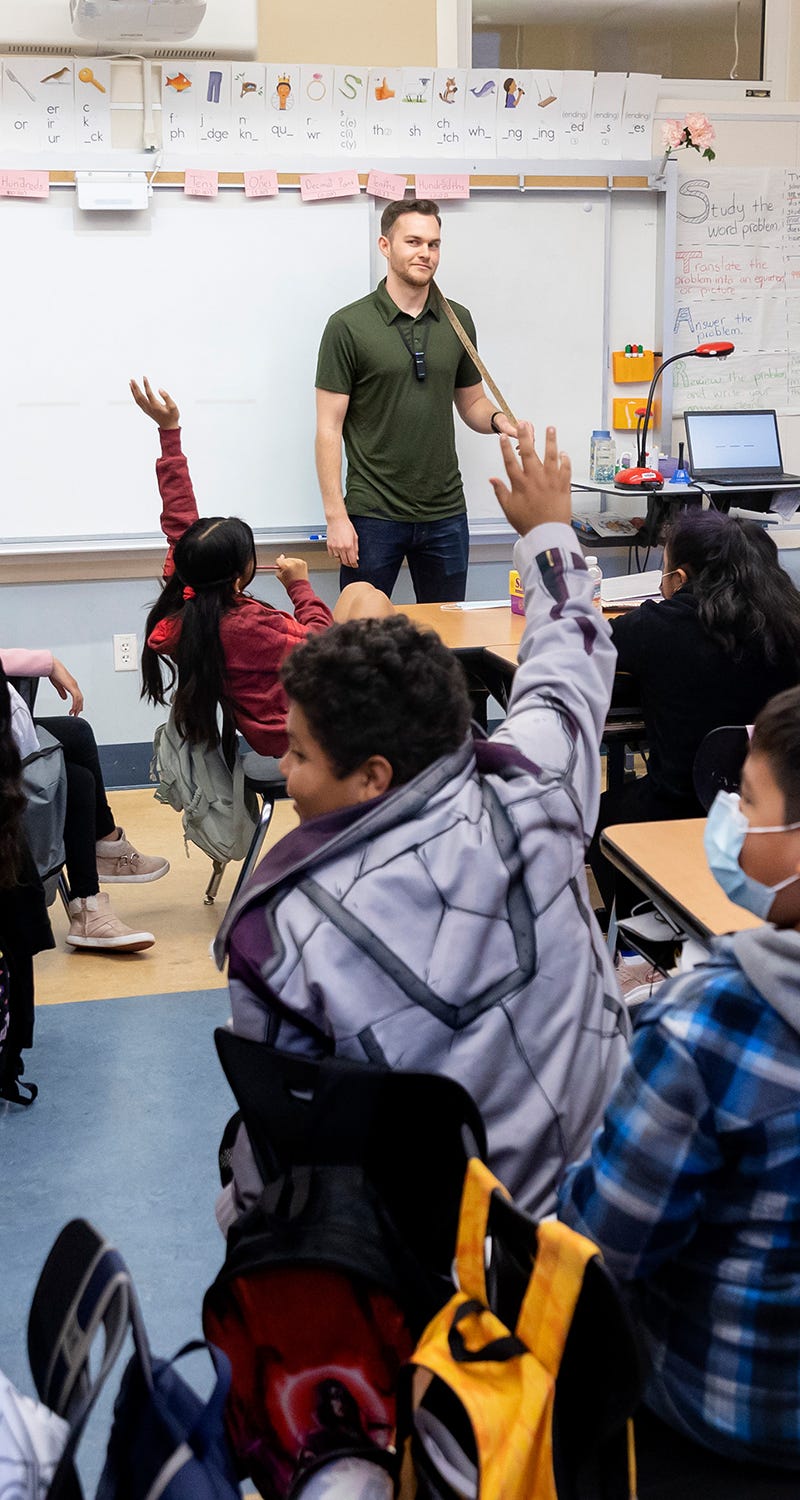
![April 28, 2023; Alexandria, VA, USA; Jasibi Crews, principal of Cora Kelly School, monitors students as they begin to go home after a school assembly at the end of the day Friday, April 28, 2023.. Mandatory Credit: Josh Morgan-USA TODAY [Via MerlinFTP Drop]](https://www.gannett-cdn.com/presto/2023/06/01/USAT/14232086-58a1-48b6-897d-a1d3f33493eb-crews_multi.jpg)
These recent moments from public schools thousands of miles apart reveal a troubling fact confronting educators, parents and students: More than three years after the COVID outbreak began, some children are thriving but many others remain severely behind. This reality means recovering from COVID could be more costly, time-consuming and difficult than they anticipated, leaving a generation of young people struggling to catch up.
This isn’t what lawmakers and education leaders had envisioned. Many were hopeful the 2022-23 school year would be the one when things would return to normal – or, at least, closer to what they were like pre-pandemic. Schools were brimming with money to test new ways to accelerate learning and hire more staff. The new hires and the educators who stuck things out were determined to help kids make progress. There was no longer a health emergency.
![A student at Cora Kelly School was asked to write an essay about why her teacher was absent. "Her excuse was she went to the doctor but she truly was way [too] lazy to teach 30 [kids,] she was [tired] and annoyed of us."](https://www.gannett-cdn.com/presto/2023/06/01/USAT/2016033c-a693-4fee-8e9e-be383dcfefbf-CoraKelly_teacher_gone.jpg)
![A student at Downer Elementary in San Pablo, Calif., shares her hopes for the school year: "My goal for this year is to [actually] learn, because I didn't learn last year."](https://www.gannett-cdn.com/presto/2023/06/01/USAT/40d1a38c-3105-4bf9-8b01-8f85c4d58975-CoraKelly_goals.jpg?crop=2329,1840,x0,y247)
USA TODAY education reporters spent six months observing elementary-school students, teachers and principals at four public schools in California and Virginia and asked them to keep journals to better understand the post-COVID education crisis and recovery. Districts in California and Virginia stayed remote for longer than those in many other states. Virginia also had some of the sharpest declines in test scores in the country.
What the reporters observed and data confirms: Kids are missing more class time than before the pandemic because parents’ attitudes about school have changed. Educators encountered students who are severely behind in reading and math yet can hardly sit still after three years of shape-shifting school days. School administrators discovered that a deluge of cash doesn’t go very far in filling jobs too few people are willing to do. Staff shortages and experiments with new curriculum – sometimes intended to cram several years of lessons into one – collided with the everyday problems of many public schools: children and families without enough food or a consistent, safe home life.
To tell this story, USA TODAY reporters cataloged moments they witnessed while visiting schools at different hours and days. What follows is a reconstructed timeline based on reporting that began last fall and an approximation of the challenges schools and students face on any given da sets of ab saws, leg lifts and battle ropes, a sweaty bu
Ms. A, 32, started doing the class more regularly this school year to deal with the stress of teaching. She almost quit when she first started at Cora Kelly School for Math, Science and Technology in Alexandria, Virginia, six years ago, overwhelmed by the pressure to do everything perfectly. “Just being able to breathe – the exercise really helps with that,” she says.
Educators’ mental health has significantly worsened since the onset of the pandemic: Nearly 3 in 4 teachers in a survey last year reported frequent job-related stress, compared with a third of working adults overall. More than a quarter of teachers and principals said they were experiencing symptoms of depression
Later, now showered and nibbling on her bread, Ms. A kicks off the school day as she always does: with a lesson on social and emotional skills. Kids move magnets with their names on them to emoji-like faces representing different emotions. Each classroom at Cora Kelly has one of these posters, and teachers and kids alike reposition their eponymous magnets throughout the day as their moods change. Today, lots of kids put their magnets on “tired.”
Principal Jamie Allardice has many items on his day’s to-do list: preparing for state testing, planning for next school year and attending to the varying needs of school staff.
It will all have to wait.
Like Principal Crews, Allardice has trouble finding substitutes at times. So he’ll be filling in for a kindergarten teacher at Nystrom Elementary School in Richmond, California.
Most of the country’s public schools reported last year that more teachers were absent than before the pandemic, and they couldn’t always find substitutes when needed. The substitute teacher shortage predates COVID – and it’s getting worse, particularly at low-income schools.
Allardice anticipates spending the day teaching the school’s youngest kids how to read sentences like “Is the ant on the fan?” and “Is the fat ant in the tin can?”
Circles under her eyes, fourth-grade teacher Wendy Gonzalez speedwalks into E.M. Downer Elementary in San Pablo, California ahead of the first bell. The hallways are lined with student work. “My goal for this year is to actully learn,” one sheet reads, with the misspelling, “because I didn’t learn last year.”
Another wall displays photographs Downer sixth graders took during the pandemic as an ever-present reminder of the damage inflicted by the pivot to remote learning. Above pictures of an empty tetherball court, a dog sitting on a stoop and a frog in darkness looking up to light, one student wrote, “We had to go to school at home for about 13 months.”
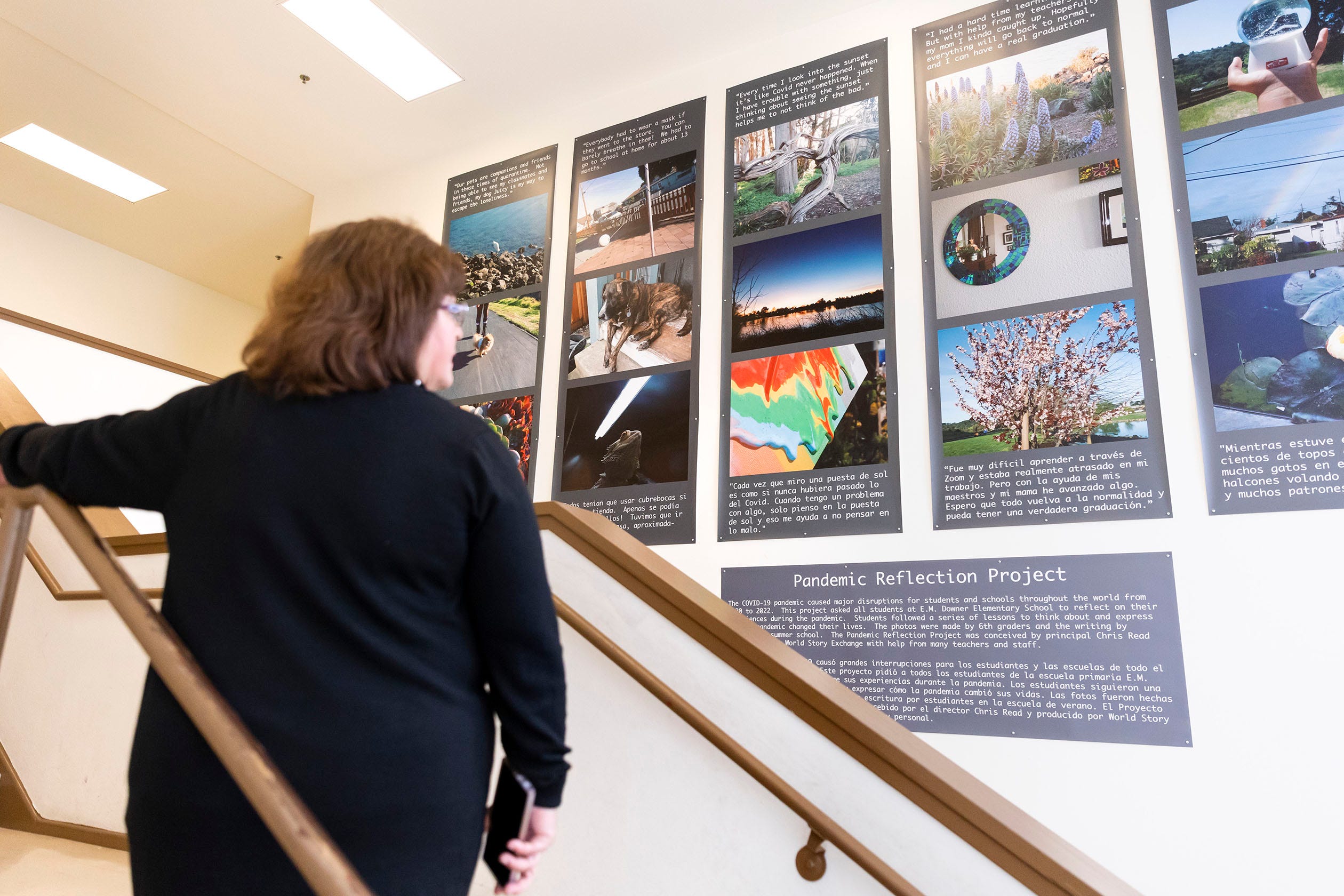
Ms. G, 45, who has taught for 19 years in the West Contra Costa Unified School District, including three at Downer, is in a hurry to see what condition her class is in after a substitute filled in the two days she was absent last week. She had a ministroke in March, which she blames in part on stress from teaching this year.
In her classroom, her copy of a new Spanish textbook, "Caminos al Conocimiento Esencial,” is on her desk next to a set of Black history flashcards, a San Francisco Giants bobblehead and a can of Sunkist. On top of all the other academic targets her students must meet this year, the principal and literacy coach want her to test new lessons for teaching kids how to read and write in Spanish.
“If I didn’t love my community I would be gone,” says Ms. G says after taking a seat. Notes of thanks and praise are tacked onto a bulletin board next to her.
As part of her morning rounds, Principal Crews, 45, stops by a fourth grade classroom in the middle of a lesson on future careers.
She notices a boy’s face is swollen and pulls him to the side. She feels his forehead, asks him if he’s feeling OK, if he was playing out near the poison ivy. He says he was playing there and it feels like a mosquito bit his face. She escorts him to the school nurse.
Crews worked for more than 15 years in Virginia and California schools before becoming principal of Cora Kelly six years ago. She knows every student by name, greeting each one as they arrive at school. She’s also keenly attuned to each child’s individual needs on any given day – whether it’s for clothes or a first-aid kit.
Cora Kelly uses a framework known as a multitiered system of support, which is a fancy way of saying it works to address the core issues, in and out of the classroom, that may be affecting a child’s behavior or academic performance. That can mean home visits if a student misses a lot of school or help from a social worker if a child needs shoes or a screening.
It’s emotionally grueling but gratifying work, Crews says, as is the job of supporting her own staff’s mental health.
“The hardest part of being an administrator has been coming back and making sure (the teachers) were OK so they could be there for the kids,” Crews says. “I wasn’t prepared for the tremendous emotional strain that that’s had on me. I had to be there for everyone, to make sure to take care of them so they could take care of the kids.”’
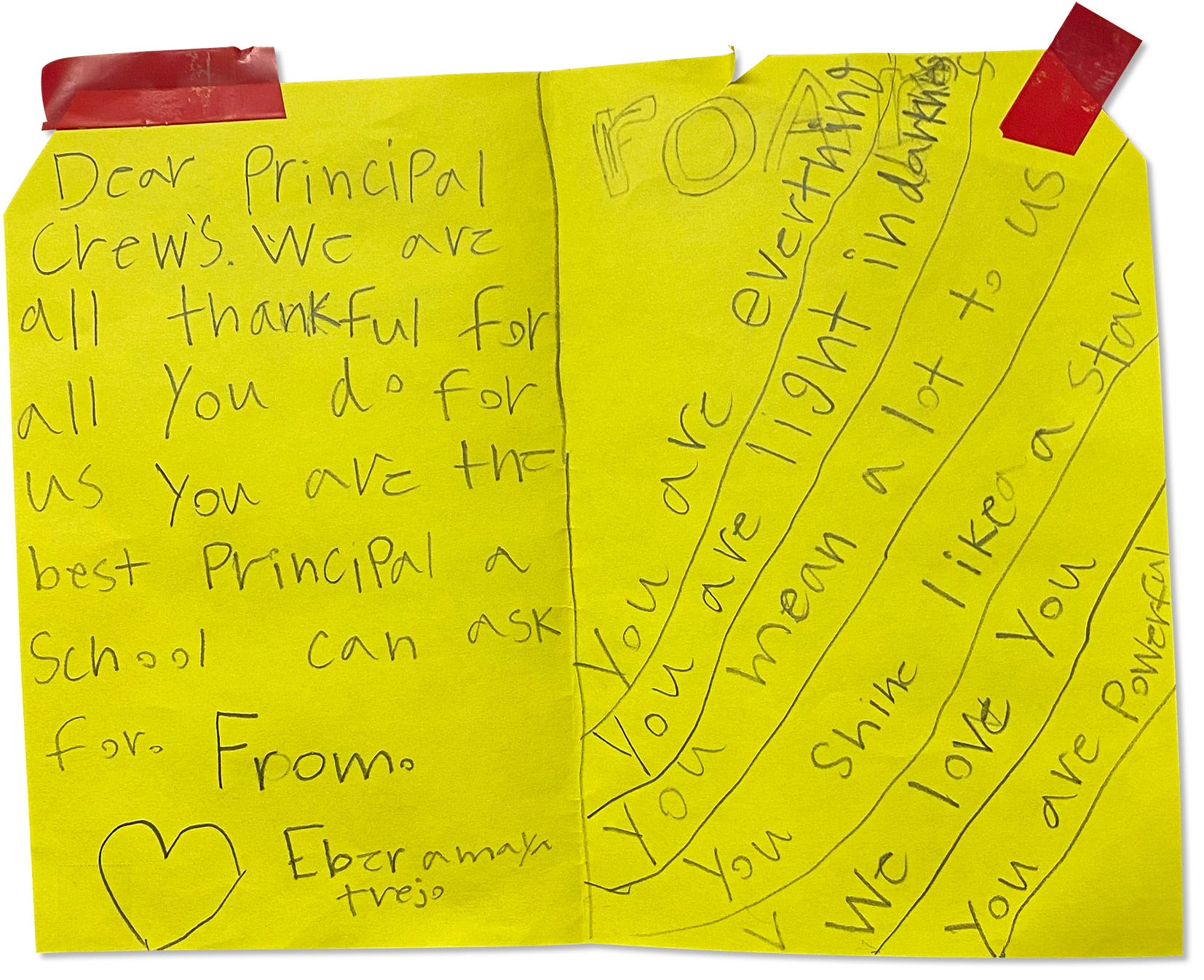
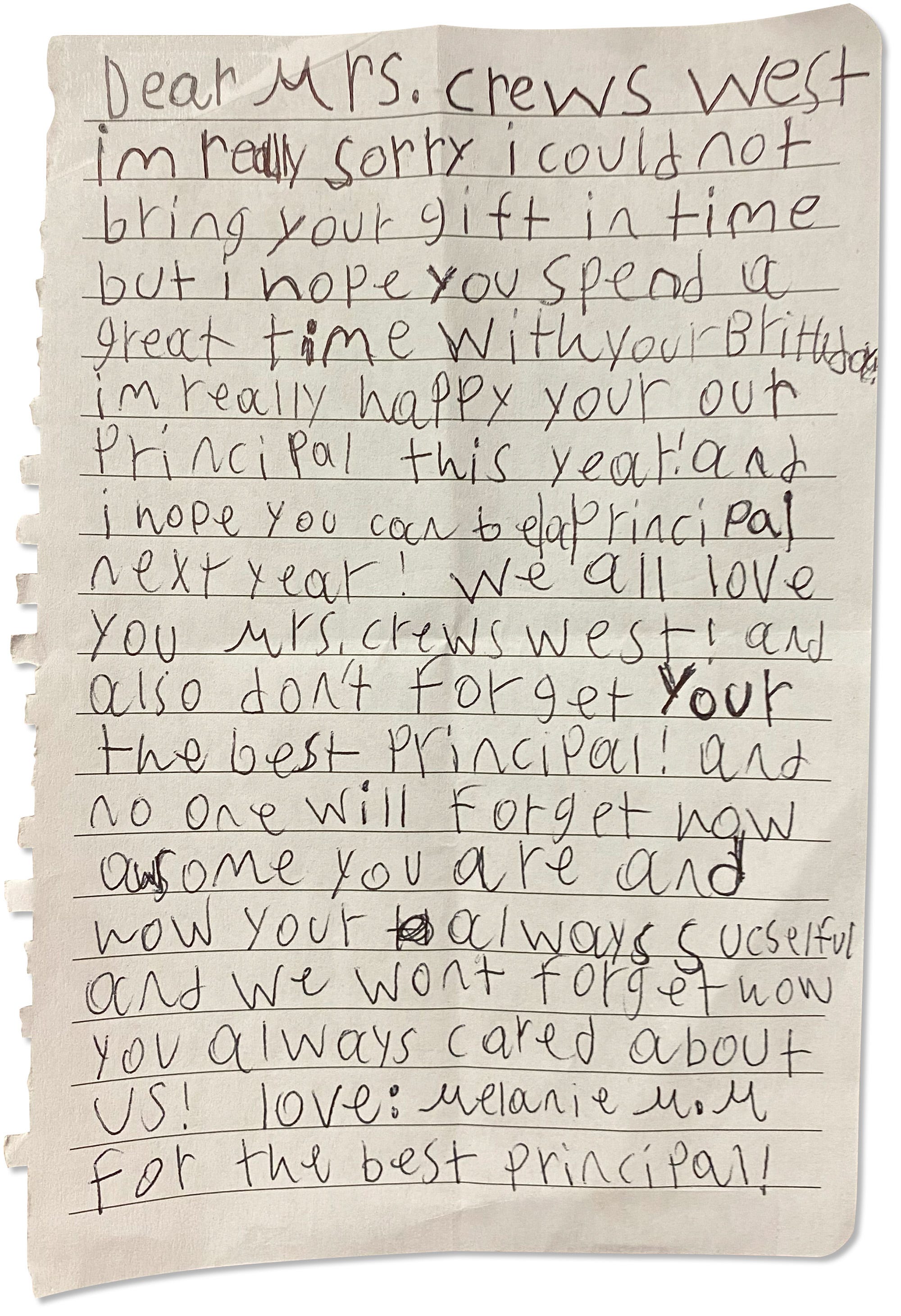
Ding. The students in Ms. A’s class are familiar with this chime. It means their teacher has given one of them a point using an app called Class Dojo that tracks their behavior. It has other functions, too, such as managing homework and communicating with parents.
Throughout the day, soft chimes signify when Ms. A has given a student a point. She rewards all kinds of things – being quiet, sitting nicely, getting an answer right, helping a classmate, simply attending. At other times, a different noise erupts when she’s deducting points. Maybe a kid wasn’t listening or following instructions. Maybe two students got into a tiff.
Kids with lots of Dojo points can exchange them for prizes such as a gift card to Chick-fil-a. These incentive systems, Ms. A says, help reinforce the behaviors and habits – from respecting others’ physical space to coming to class on a consistent basis – that many students failed to learn because of remote schooling.
Ashley and her classmates at Cora Kelly are in math class with the other third grade teacher. An assistant is out, the teacher announces, so the kids have to work independently while she consults with small groups.
Today’s lesson is on imperial measuring units for liquids – gallons, quarts, pints, cups – and the teacher says she has a story that will help them memorize valuable information for their upcoming state math tests. The story is called The Kingdom of Gallon, she explains: The kingdom has four queens – in other words, four quarts. Each queen has a prince and a princess – two pints. Each prince or princess has two cats – two cups.
Kids proceed to cut and paste pictures of different items – a gallon of paint, a carton of milk – onto papers with labels for the unit. Many, including Ashley, are distracted. She spins her notebook around a pencil. One of her knees bobbles from left to right. She gets up to tap a pencil on the table, to the projector to wave her hand under the camera. She yawns and plays with her shoe.
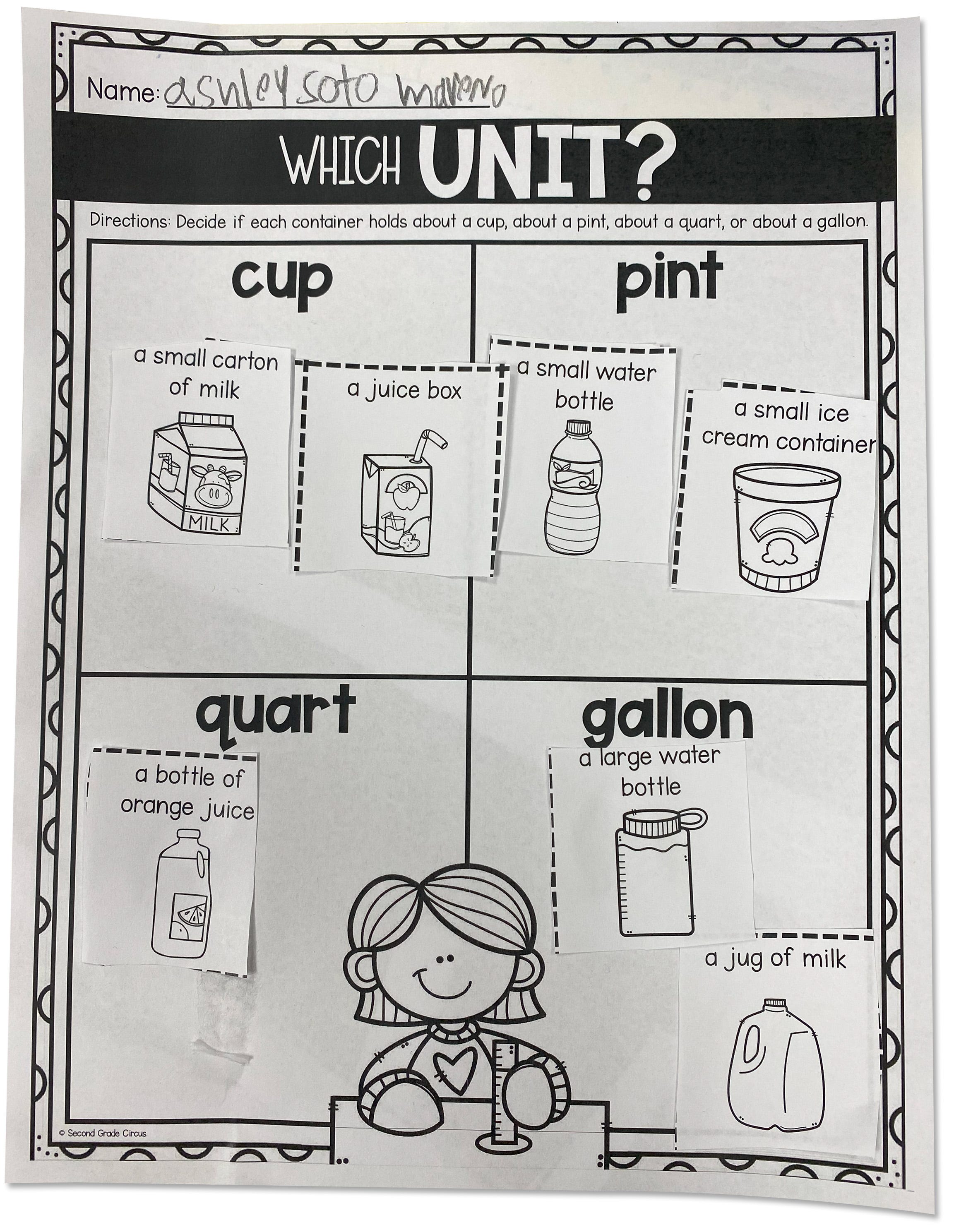
Teachers and parents nationwide report kids’ attention spans are even shorter since the pandemic, perhaps in part because it led to unprecedented amounts of screen time among children. Educators strive to make lessons engaging but kids can’t always concentrate, especially when there’s only one adult in the classroom.
Ashley pastes an image of a large water bottle under the wrong label – gallon when it should be quart. She quickly realizes it’s a mistake and tries to unstick the image. Ashley, who in her spare time loves drawing and making jewelry and collecting rocks, is careful to repositio\
Mr. LaFleur tells the class they'll review skills for a state math exam that will cover multiplying, long division and fractions. Jada Wilson groans when he says they can’t use multiplication charts on the test.
Jada, 10, has improved on fractions and expanded division this year but worries how she’ll do without the aid. She began fourth grade with the skills of a kid halfway through second grade, LaFleur said, but has made up most of that ground.
Jada’s progress is an exception: Other students’ scores moved backward mid-year.
“I really questioned myself and my teaching. It can’t get an
As Mr. LaFleur’s class begins a reading lesson at Nystrom, several seats are empty. One of them belongs to Jayceon Davis.
Jayceon’s mom, Georgina Medrano, works nights and occasionally gets home at 2 a.m. Sometimes she dozes off after waking her kids, and they don’t make it to school on time. Jayceon said he is sometimes confused doing his homework because he misses the lessons and hasn’t turned much of it in.
For kids who are already behind this school year, every minute of learning this year was critical, but far more for students who missed more school days than before the pandemic. Chronic absenteeism – generally when kids miss more than 10% of the school year – increased in more than 70% of schools nationwide last school year, federal data shows.
Jayceon began the year with low test scores in reading and math, unbeknownst to Medrano, who says she’s frustrated no one told her about it at the beginning of the school year. “He reads to me at home, so I don’t understand how he’s behind,” she says.
Medrano says she also knew nothing about Jayceon’s missing assignments until March, when she got a text from Mr. LaFleur, who says he tried several times early in the school year to call Jayceon’s mom about the homework with no success. Then he gave up, hoping she would see notes sent through the school’s online messaging system. She, like many parents this year, didn’t have a real sense of how their kids were doing in
Ashley, like many kids in her class, has never ridden a bike without training wheels. Today in P.E. class, she and the other novices learn on a special bike designed without pedals. The purpose: to learn how to balance.
It takes a while, but before the end of class Ashley, her long curls streaming behind her, manages to glide for 10 seconds without touching her feet to the ground. She graduates to the stationary bike.
She’s thrilled.
It may have nothing to do with phonics or probability or photosynthesis, but this learning matters, too. It’s the kind of lesson that was impossible to replicate during the pandemic, and one that students seem to enjoy most.
It’s just before recess and lunch in Ms. A’s class. She issues constant reminders to pay attention and be quiet. Yet some students lie on the ground, chit-chatting. Others make animal noises, gobbling like a turkey and grunting like a monkey.
Ms. A moves her magnet on the classroom’s mood chart to “annoyed.”
Eventually she says to the group: “I think we need to refresh. Everyone’s a little tired. And it’s Fri-Yay! But we are here to learn.”
One boy sneaks out to get a pack of Gushers candy from his backpack hanging near the classroom door. With a smirk, Ms. A orders him to hand the gummies over, saying she doesn’t want him to get a sugar high.
It’s the kind of thing she’s now able to brush off, a skill she didn’t have as a new teacher. She ignores children who are bickering, keeping her voice gentle and smooth as she delivers instructions.
No comments: